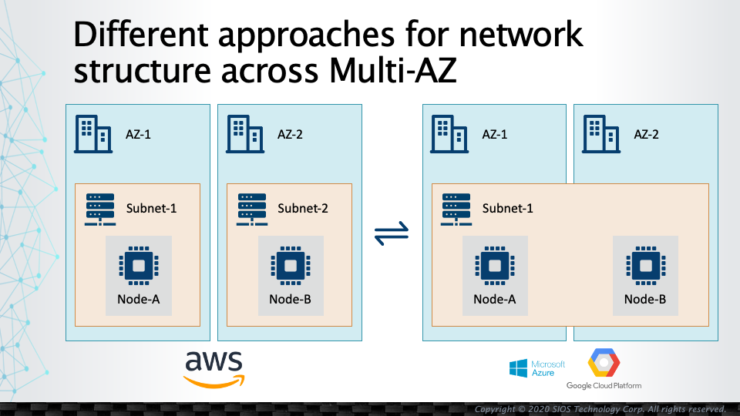Public Cloud Platforms and their Network Structure Differences
There are several public cloud platforms including Amazon Web Services (AWS), Microsoft Azure and Google Cloud. While there are many similarities in their infrastructures, there are some differences. In many cases a VPC (Virtual Private Cloud) or a VNET (Virtual Network) that is tied to a region is created. One or more VPCs may be defined for a logical group of applications. By so doing, different systems are divided into separate unconnected networks unless different VPCs are specifically connected.
Under a VPC many different subnets can be defined. Based on the purpose, some subnets are configured as “public” subnets which are accessible to the internet and some are configured as “private” subnets which are not accessible to the internet.
Some cloud providers (such as Azure and Google Cloud) allow subnets to be defined across Availability Zones (different datacenters), while some (such as AWS) do not allow subnets to be defined across Availability Zones. In the latter case, a subnet will need to be defined for each Availability Zone.

In this guide, we’ll use different Availability Zones for each node. Once the basic functionality of the SIOS product is understood, it might be appropriate to explore different scenarios (similar to those in use in your own network infrastructure) that involve distributing workloads across different subnets, modifying the IP ranges for these subnets, changing the manner in which the network is connected to the Internet, etc.
